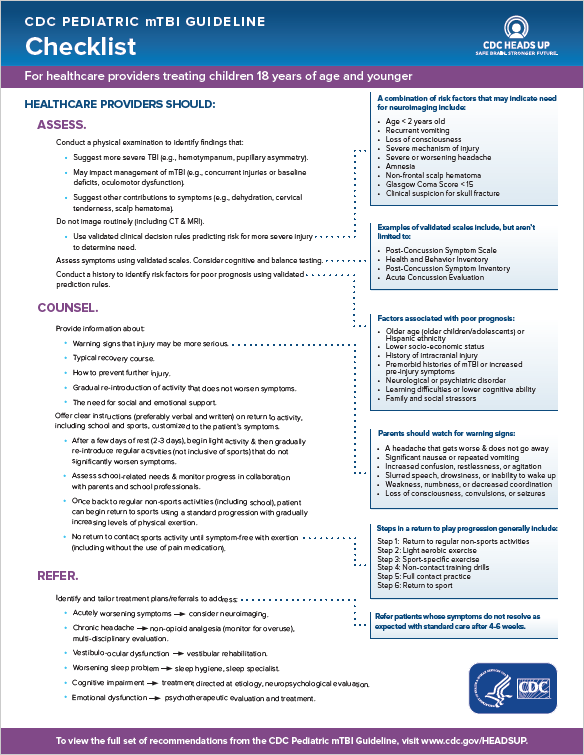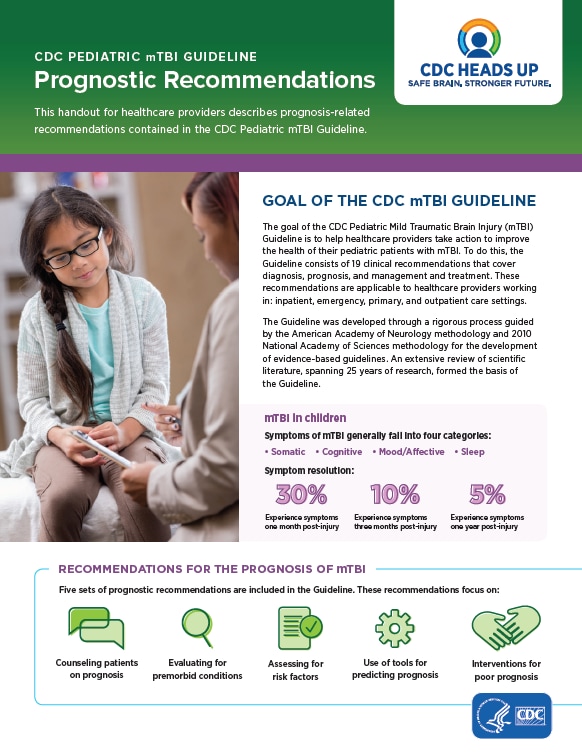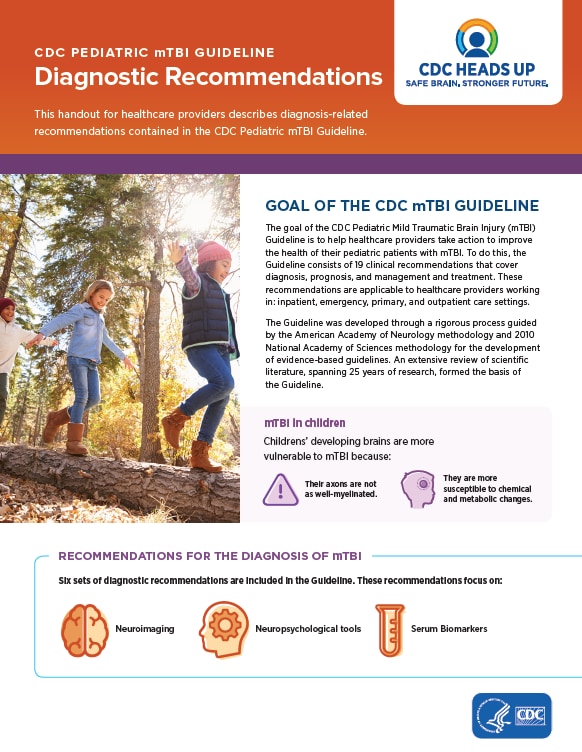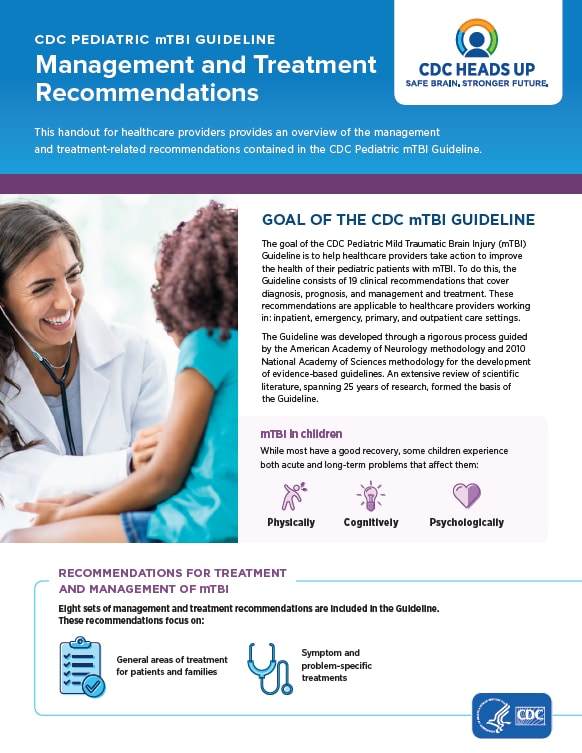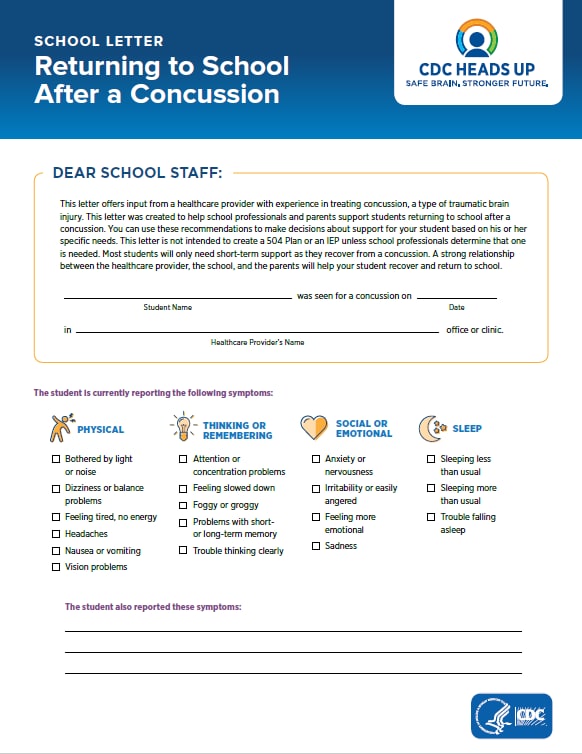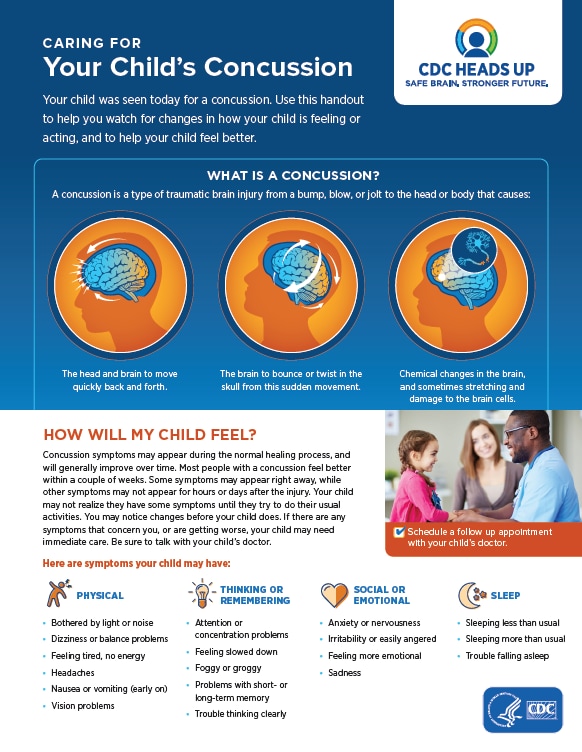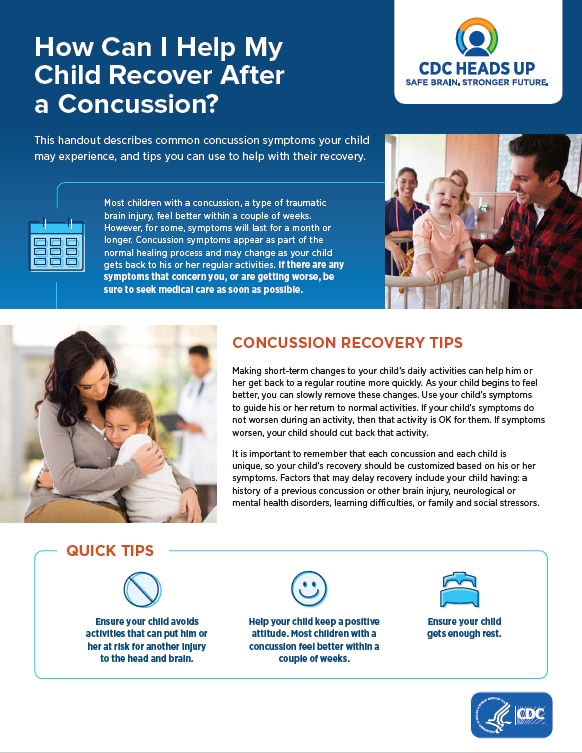CDC Pediatric mTBI Guideline
HEADS UP to Healthcare Providers online training is now available on CDC Train! There are three different versions offered for clinicians, school health providers, (e.g. school nurses), and other allied health professionals. Sign up today and earn 2.0 Continuing Education Credits through the American Academy of Pediatrics.
Take Action to Improve the Care of Children with mTBI
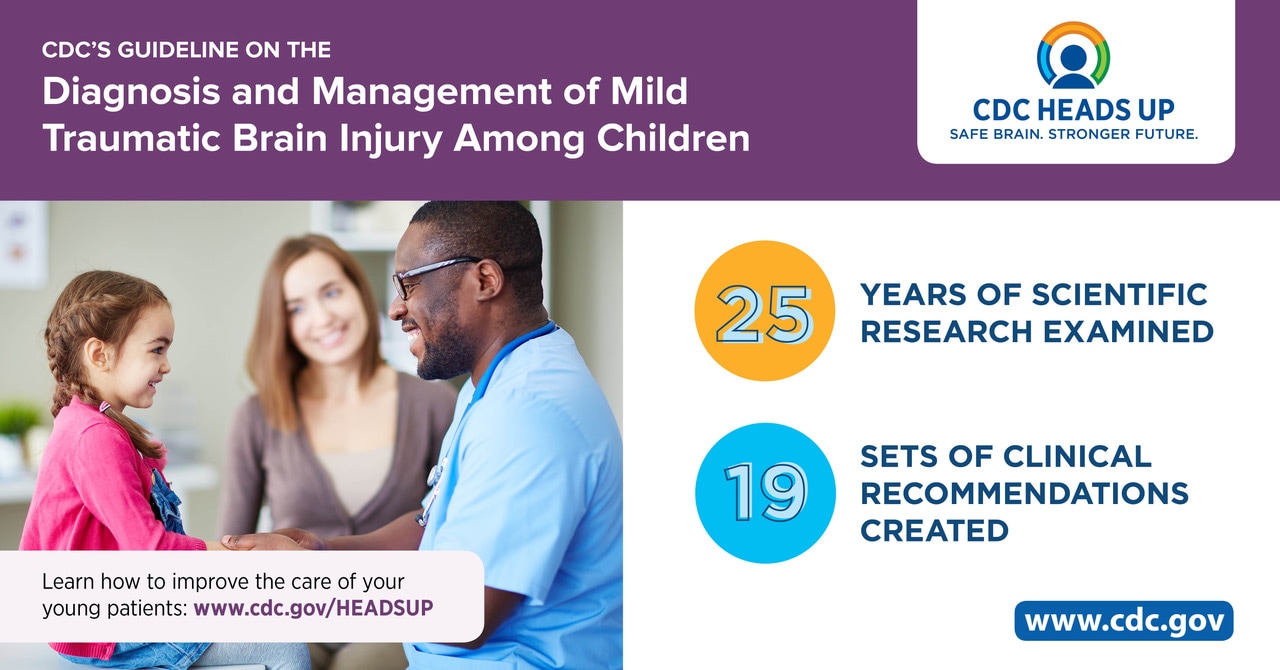
The goal of the CDC Pediatric Mild Traumatic Brain Injury (mTBI) Guideline is to help healthcare providers take action to improve the health of their patients. The CDC Pediatric mTBI Guideline consists of 19 sets of clinical recommendations that cover diagnosis, prognosis, and management and treatment. These recommendations are for healthcare providers working in: inpatient, emergency, primary, and outpatient care settings.
The CDC Pediatric mTBI Guideline was developed through a rigorous process guided by the American Academy of Neurology and 2010 National Academy of Sciences methodologies. An extensive review of scientific literature, spanning 25 years of research, formed the basis of the Guideline.
Overview
- Do not routinely image patients to diagnose mTBI.
- Use validated, age-appropriate symptom scales to diagnose mTBI.
- Assess evidence-based risk factors for prolonged recovery.
- Provide patients with instructions on return to activity customized to their symptoms.
- Counsel patients to return gradually to non-sports activities after no more than 2-3 days of rest.
Provider Tools
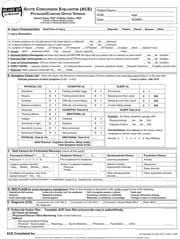
The ACE (Acute Concussion Evaluation) forms are patient assessment tools.
Download
Training
Patient and Family Resources
To learn more about concussion, such as the signs and symptoms and how to safely return to school and sports after a concussion, check out the CDC HEADS UP website.
